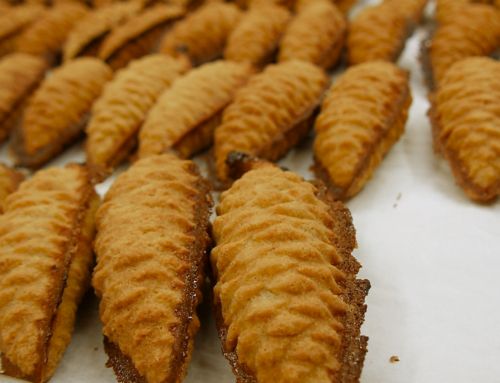Na freguesia de Pereira, em Montemor-o-Velho, são várias as pastelarias e doceiras que se dedicam à produção destas queijadas. Fazem-se ainda de uma forma muito artesanal, porque têm de ser recheadas e fechadas à mão, uma a uma, e com a ajuda de um utensílio que consiste num pequeno ferro espetado numa rolha. A tradição diz que, para fechar a massa de cada queijada, deve-se vincar sete bicos a toda a volta do doce, para acomodar bem o recheio. No foral de 1513 de Pereira, concedido por D. Manuel I, já aparece uma referência a queijadas. Seriam iguais a estas que hoje se fazem? O que sabemos é que a tradição é antiga e o conhecimento passou de mão em mão. Assim, esperamos que continue, para que não desapareça. A massa contém simplesmente farinha, margarina e água morna. O recheio é feito com queijo fresco, açúcar e gemas de ovo. Depois de cozidas no forno, as queijadas de Pereira são empilhadas em grupos de seis ou de doze e embrulham-se em papel, prontas para qualquer viagem.
***
In the village of Pereira, in Montemor-o-Velho, there are several pastry shops and confectioners that are dedicated to the production of “queijadas”. They are still handmade, for they have to be filled and closed by hand, one by one, and with the help of a utensil consisting of a small iron stuck in a piece of cork. Tradition says that in order to close the dough of each “queijada”, you must form seven creases all around the sweet to accommodate the filling appropriately. In the royal charter of Pereira, in 1513, granted by D. Manuel I, a reference to “queijadas” can already be found. Would those be the same as these today? What we do know is that this tradition is old and knowledge has passed from hand to hand. So we hope it will continue and not disappear. The dough contains simply flour, margarine and warm water. The filling is made with fresh cheese, sugar and egg yolks. Once baked, the “queijadas” of Pereira are stacked in groups of six or twelve and wrapped in paper, ready for any journey.






